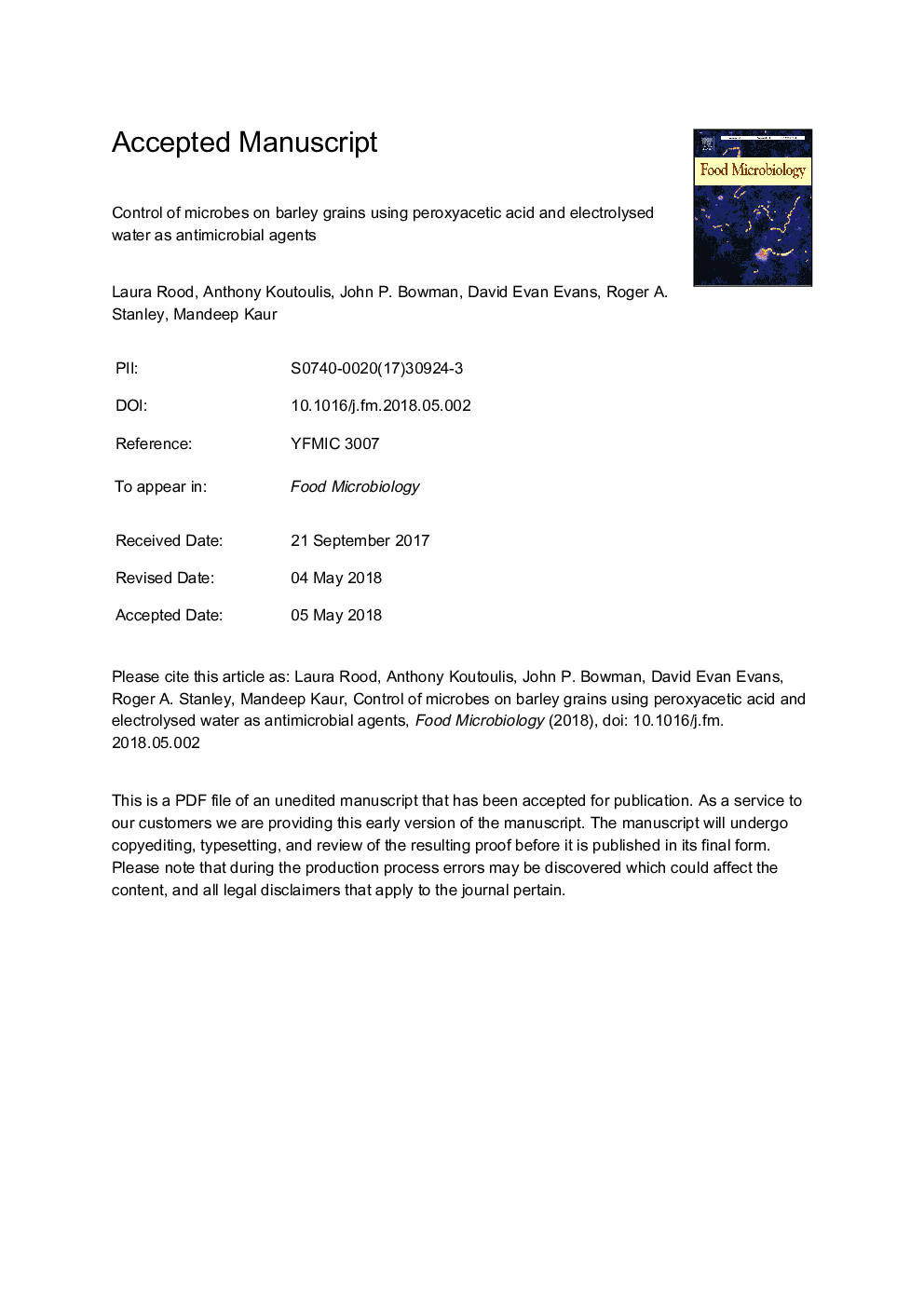| Article ID | Journal | Published Year | Pages | File Type |
|---|---|---|---|---|
| 8843421 | Food Microbiology | 2018 | 30 Pages |
Abstract
The extent and type of microbial growth on barley grain is a key determinant of malt quality for beer production, as problematic microbial products can persist into the brewing process and impact beer quality. Microbial composition on malting barley grain are influenced by field growth, storage and malting conditions. The present study investigated the efficacy of electrolysed water (EW) with free chlorine concentrations of 5, 50, 100 and 500â¯ppm, as well as peroxyacetic acid (PAA) at 100 and 500â¯ppm, as pre-steep treatments to control microbes on grains during the malting process. The research determined the reduction in the load of Pseudomonas spp., heterotrophic bacteria, yeasts and filamentous fungi on weathered and on non-weathered grains. Pseudomonas spp., heterotrophic bacteria and yeasts were significantly reduced up to 4 logs when treated with 500â¯ppm PAA. PAA reduced filamentous fungi but 500â¯ppm free chlorine EW showed greater reductions. None of the treatments had detrimental effect on grain germination. The variation in antimicrobial efficacy among treatments can be attributed to variations in microbial susceptibility as well as differences in anti-microbial mechanisms specific to each antimicrobial agent.
Related Topics
Life Sciences
Agricultural and Biological Sciences
Food Science
Authors
Laura Rood, Anthony Koutoulis, John P. Bowman, David Evan Evans, Roger A. Stanley, Mandeep Kaur,
